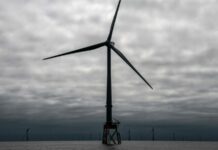
[miningmx.com] — WHILE the likely cost of South Africa’s planned nuclear power stations has been grabbing headlines, a more pertinent question is : by when will they actually be built?
The nuclear programme is already running one year behind schedule, according to
Energy Minister Dipuo Peters – and more likely two years behind schedule – according to Ian Hall, chairman of the South African Coal Road Map Steering Committee.
The South African coal industry is watching developments on the nuclear and renewable energy fronts very closely.
The reason is that any slippage on the ambitious targets set out in government’s Integrated Resource Plan 2010 (IRP 2010) is likely to result in the construction of another large, new coal-fired power station.
The IRP2010 plan – released in April 2010 – called for the construction of six nuclear stations generating 9.6GW of energy by 2030 with a new 1,600MW “nuke’ to be built every year between 2023 and 2026 and the last two in 2028 and 2029.
It also called for the installation of 17GW of renewable energy – wind and solar – by 2030.
This week Peters confirmed that the total cost of the nuclear power stations could be around R1 trillion.
But the IRP2010 plan cautioned that, “long lead times for new nuclear power stations require immediate, firm commitments to the first 3GW”.
In practical terms a decision needed to be made within a year to go ahead with the first two of those planned six new nuclear stations.
That has not happened. Peters announced in mid-September that South Africa was postponing a decision by one year for safety reasons after the tsunami incident at Japan’s Fukushima nuclear plant in March.
In a presentation to the South African National Energy Association in Johannesburg on Tuesday Hall commented, “I, personally, believe the targets set in the IRP 2010 plan are very aggressive and I understand we are already two years behind on delivering that 9.6GW of nuclear power.
“Can it be delivered? That is the question.’
The first phase of the SA Coal Road Map report is to be presented on November 4 and will consist of an assessment of the present state of the coal industry along with three future development scenarios.
The three scenarios range from “A’ – the most favourable for the coal industry – to “C’ as least favourable with scenario “B’ reflecting a situation in which IRP 2010 is actually implemented as planned.
Hall commented: “Let’s look at what scenario A means and this is where I get into trouble because I start to speculate.
“People say this is what the coal industry wants but it is not. This is one of three plausible scenarios on which we will base a future discussion.
“Scenario A says perhaps the 9.6GW of nuclear power will be delayed and perhaps the 17GW of renewable energy will be only 8GW, which is already a lot considering what we currently have.
“Therefore, perhaps there’s a plan B and we bring forward some coal fired stations. The current plan says there will only be new coal-fired stations after 2025 because that’s when CCS (carbon capture systems) are supposed to come in.
“The idea would be to bring forward the coal build along with some coal-fired IPPs (independent power producers) and, by 2025, we might see a CTL (coal to liquid) plant built.’
Hall stressed that, globally, coal was “here to stay’ as an energy source until at least 2035 despite intense environmental opposition.
“Coal use has grown faster than any other major fuel over the past ten years and it accounted for 30% of the world’s primary energy in 2010 which is its highest share since 1970.’
Hall pointed out the global compound annual growth rate (CAGR) in demand for coal was 4% for the period 2000 – 2010 compared with just 1.7% in the period 1975-2000.
Reason was soaring demand from emerging economies had more than compensated for low demand in developed nations.
Hall said coal production in China had trebled over the last decade with China’s CAGR rising to 8.8% from 4.9% in the period 1975 – 2000.
“Some 1.4 billion people around the world still do not have access to electricity and around two billion more people will be urbanised over the next 20 years creating a massive demand for energy,” he said.
“In energy, coal has been the big story over the past ten years despite its bad press and, under any scenario, coal will be around until 2035 at least and it will be big.’











